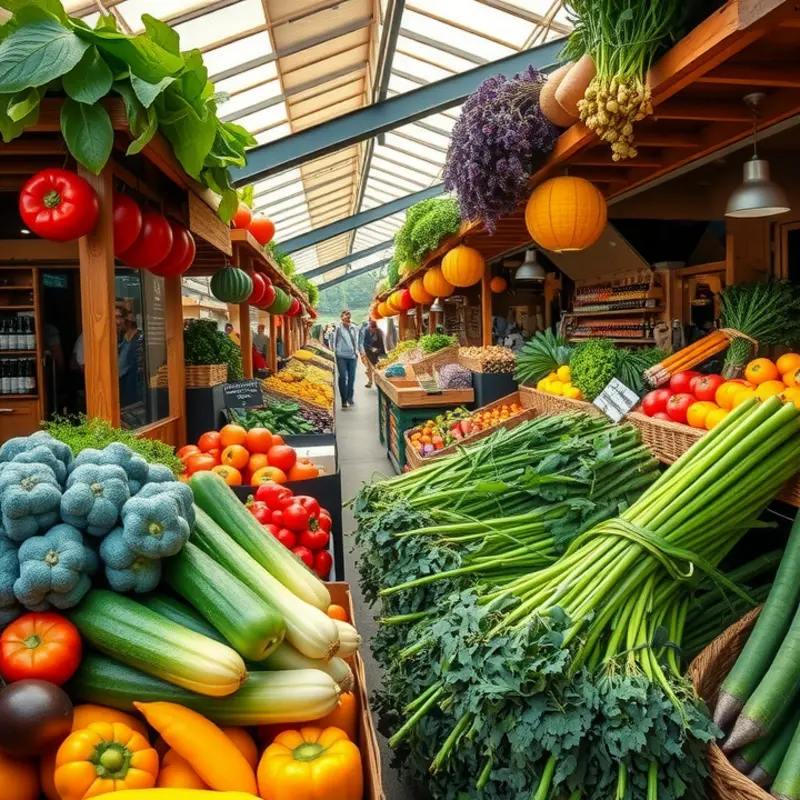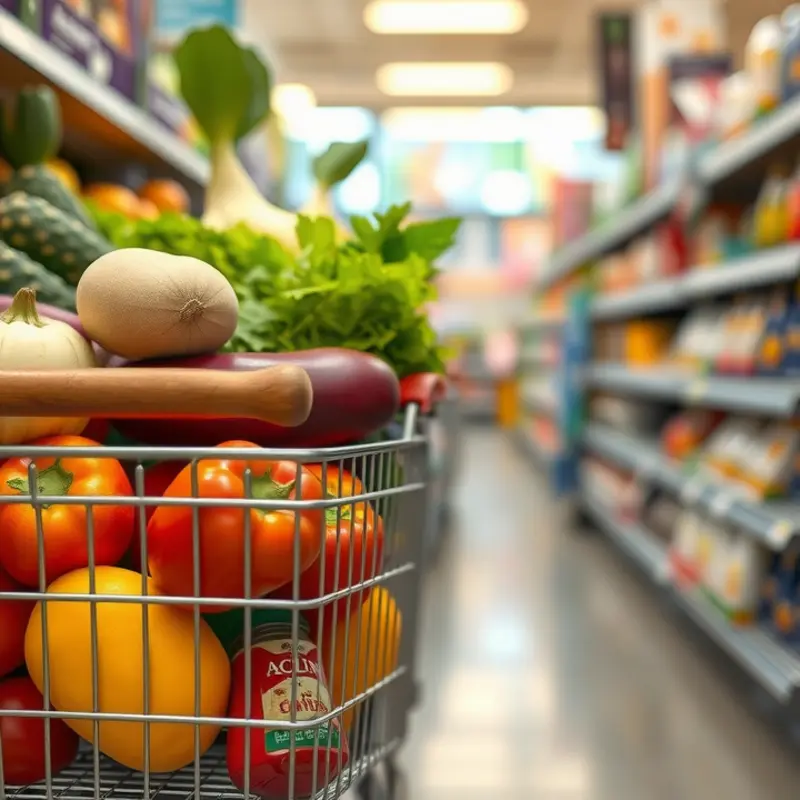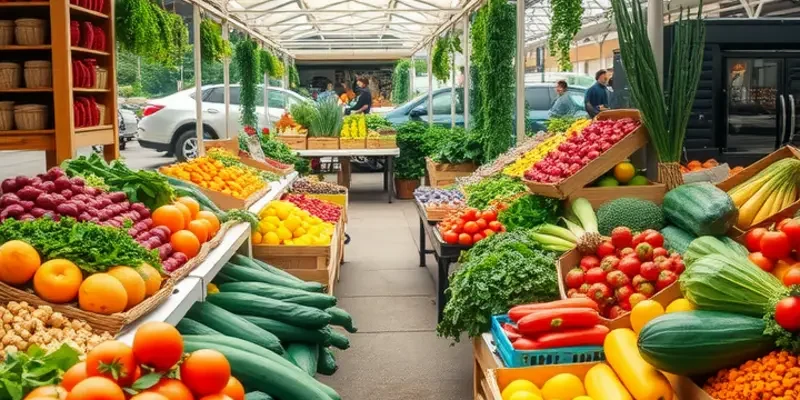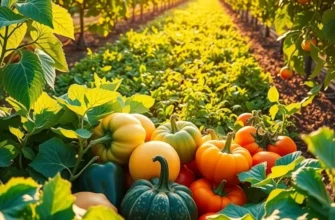Making eco-conscious food choices doesn’t have to strain your wallet. Embracing sustainable eating on a budget is not only possible; it can be enjoyable and rewarding! With a little planning, creativity, and resourcefulness, you can nourish both your body and the planet. This guide provides practical strategies to help you thrive on sustainable foods without feeling deprived. Let’s explore actionable ideas and solutions towards a greener diet that aligns with your ethical values while keeping your finances in check.
Find Local and Seasonal: Your Key to Budget-Friendly Eating

Choosing to eat locally and seasonally is one of the most effective ways to embrace eco-friendly dining that doesn’t stretch your budget. Local produce cuts down on transportation emissions and is often more affordable than imported goods. Plus, it supports local farmers and nourishes communities. By making these choices, you aren’t just benefiting the planet but also gaining access to fresh, nutrient-rich foods.
To kickstart your journey, consider frequenting farmers’ markets. They are treasure troves of fresh produce, often cheaper than supermarket alternatives. You can find farmers’ markets by checking out community boards, local newspapers, or websites dedicated to local food systems. Many markets are hosted weekly, offering a rotating selection of what’s in season.
Another great option is joining a community-supported agriculture (CSA) program. With CSA, you’re essentially investing in a local farm for a portion of their harvest. By paying in advance, you help farmers with their planning and expenses while securing fresh, seasonal produce at a fair price. CSAs often deliver boxes to convenient locations or even to your doorstep, simplifying your shopping routine.
Growing your own herbs and vegetables is also an incredible way to eat sustainably and cut costs. You don’t necessarily need a large garden space—a few pots on a windowsill can suffice for herbs like basil, mint, or chives. Vegetables such as tomatoes and peppers can thrive in pots on small balconies. For beginners, start with easy-to-grow herbs and slowly expand to vegetables that fit your culinary preferences.
Understanding which fruits and vegetables are in season is key to maximizing freshness and cost savings. Seasonal produce is not only cheaper due to the abundance of supply but also tends to taste better and contain more nutrients. Local agricultural extensions or farmers can provide invaluable insights into what to plant or purchase each season.
Each choice you make can contribute significantly to a more sustainable lifestyle. By sourcing locally and seasonally, you reduce the carbon footprint associated with your food, support community resilience, and enjoy higher-quality meals. To further enhance your eco-friendly eating habits, consider reviewing effective storage techniques that can help extend the life of your produce and reduce waste. For insights on smart storage solutions, explore eco-smart kitchen storage. By integrating these practices into your daily life, you can sustain both your health and the planet’s.
Smart Shopping Strategies: Maximize Your Eco-Budget

Grocery shopping sustainably requires planning and mindful decision-making. The goal is to choose eco-friendly options without straining your budget. Here’s how to make the most of your eco-budget while keeping your cart filled with healthy, sustainable choices.
Prioritize Bulk Buying
Purchasing staples in bulk not only reduces packaging waste but often saves money. Dry goods such as grains, nuts, and legumes are excellent candidates for bulk buying. This method allows you to purchase the exact quantity you need, minimizing food waste and overconsumption. Moreover, bulk sections often provide a variety of organic and non-organic options, making it easy to choose products that align with your sustainability goals.
Leverage Store Loyalty Programs
Many stores offer loyalty programs that provide discounts, rewards, or exclusive access to sales. These programs can significantly stretch your budget, especially when combined with eco-conscious choices. Enroll in programs that focus on sustainable products, ensuring you’re rewarded for choosing items that are good for you and the planet.
Craft Thoughtful Shopping Lists
A well-prepared shopping list is crucial for eco-friendly dining. Before heading to the store, inventory what you have at home to prevent unnecessary purchases. Organize your list by sections of the store to streamline your shopping experience and reduce impulse buys. Focus on items with minimal packaging, local produce, and in-season fruits and vegetables.
Capitalize on Seasonal Sales
Seasonal produce is often more affordable and fresher, reducing the carbon footprint associated with long transport. Additionally, stores frequently offer sales on these items, which is a win-win for your budget and the environment. Plan your meals around these sales to enjoy both economic and nutritional benefits.
Embrace Meal Prepping
Meal prepping can help curb last-minute food decisions, often leading to waste and overspending. Prepare meals in advance based on your shopping list, which ensures you use all purchased ingredients efficiently. Opt for simple, versatile recipes that allow ingredient flexibility and help minimize food wastage.
Plan for Minimal Waste
By adopting low-waste shopping practices, you inherently support eco-friendly initiatives. For more in-depth tips, explore safer storage techniques for sauces to enhance the longevity of your groceries and reduce spoilage.
Incorporating these strategies into your shopping routine doesn’t necessitate trading affordability for sustainability. With deliberate planning and informed choices, you can nourish both body and planet without breaking the bank. A sustainably stocked kitchen is possible, rewarding both your health and your wallet exponentially.
Final words
Embracing sustainable eating on a budget is a journey towards a more eco-friendly lifestyle. Being mindful of your food choices allows you to support local economies, reduce food waste, and contribute positively to our planet’s health. By incorporating local produce and employing smart shopping strategies, you can nourish yourself not only with wholesome food but also with the knowledge that you’re making a difference. Sustainable eating is not just a trend; it’s a commitment to bettering the world we live in—one meal at a time. Remember, every small change counts and contributes to a larger collective impact.








